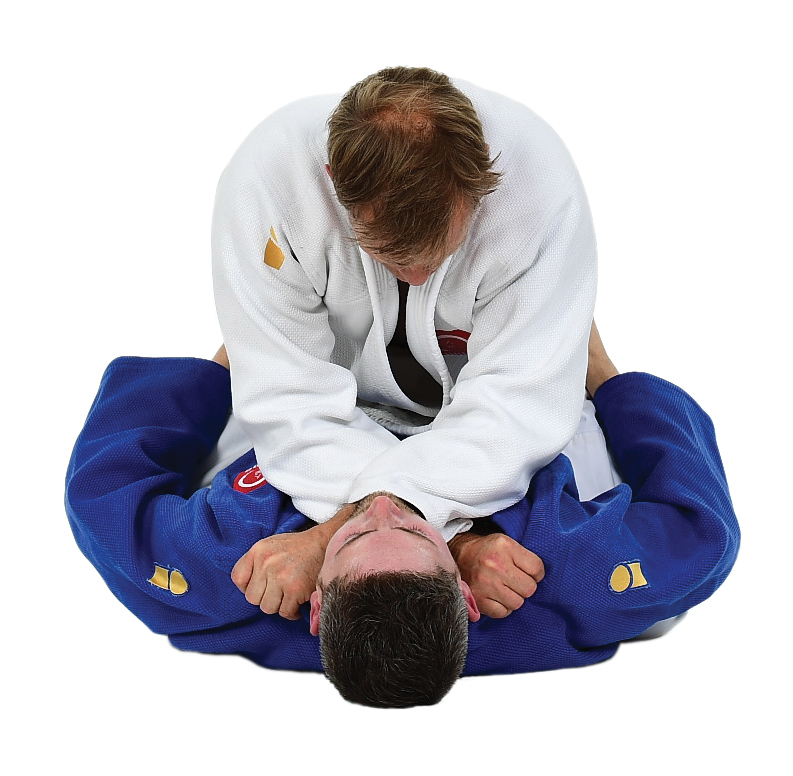Nami-juji-jime 並十字絞 (Normal Cross Choke)
Classification: Katame-waza → Shime-waza (Strangulation Techniques)
Purpose: A classic gi-based strangle intended to force submission via pressure to the carotid arteries.
Description
Nami-juji-jime translates as “normal cross strangle.” This technique uses a symmetrical, palm-down grip on the opponent’s collar. It’s one of the fundamental juji-jime (cross choke) variations and a staple in both kata and randori practice.
This strangle applies bilateral pressure on the carotid arteries using the ulnar edge (pinky-side) of each forearm, restricting blood flow to the brain and inducing unconsciousness if not released.
How to Apply
-
Position:
-
Begin from a dominant top position (often mount, guard, or kneeling above uke).
-
-
Grip Setup:
-
Cross your hands, inserting both thumbs inside uke’s collar, each hand gripping deep near the base of the neck.
-
Your palms face downward, with the four fingers outside the lapel, forming a symmetrical “X” pattern across uke’s chest.
-
-
Choke Execution:
-
Pull your elbows toward your body while squeezing your wrists inward, like wringing a towel.
-
At the same time, pull uke toward you or press downward depending on your position.
-
Biomechanics
-
The effectiveness comes from closing the carotid arteries using the outer ridge of each forearm (ulna).
-
Proper hand positioning is crucial—too shallow and the choke won’t work, too deep and you’ll lose leverage.
-
By using your back and arms, rather than just your hands, you maximize efficiency and reduce fatigue.
Safety Considerations
-
Time under tension: The choke can render someone unconscious within seconds—release immediately upon tap.
-
Supervision: Practice should always be done under the guidance of an experienced instructor.
-
No twisting pressure on the windpipe—this is a blood choke, not an air choke.
Did you know?
The three primary juji-jime variations all refer to the position of the palms:
-
Nami-juji-jime: both palms down (normal cross choke)
-
Gyaku-juji-jime: both palms up (reverse cross choke)
-
Kata-juji-jime: one palm up, one palm down (half cross choke)
Nami-juji-jime is often taught early because it illustrates the mechanics of collar-based strangulation and instills control and sensitivity in applying submissions safely.
